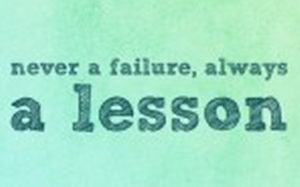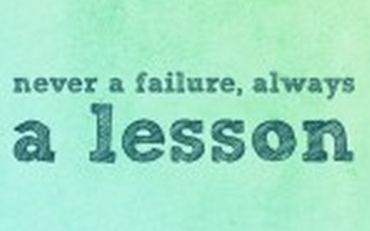Clay Shirky once said: The change we are in the middle of isn’t minor and it isn’t optional. As Clay describes the digital internet age, it is far from minor and not optional. Right on the mark isn’t it? This description is particularly relevant to the need for continuous learning lessons.

Check out our thoughts on team leverage.
The amount of new technical information is doubling every two years. EVERY TWO YEARS. The top 10 jobs that were in demand in 2013 didn’t exist in 2004. We are currently preparing students for jobs that don’t yet exist, using technologies that don’t yet exist. All this in order to solve problems we don’t even know are problems yet. Scary, isn’t it?
For students starting a 4 year technical or college degree, one-half of what they will learn in their first year of study will be outdated by their third year of study. We are clearly living in exponential times, aren’t we? For more background see Shift Happens 2013.
What is your choice for the top learning issue of the day? Continuous learning is our choice. Taught in schools? We have not found many that are changing their learning and education strategy based on this environment. In fact, most seem to be hunkering down even more into the past. We were very surprised by this finding.
In earlier times, perhaps several generations or so ago, our great grandparents and their parents faced an entirely different problem of learning. In their environment, both generations shared the same problems and basically the same solutions. Learning in this environment was a lot simpler. It was simply a matter of transferring information (facts) from the older generation to the newer one.
Enter the industrial age where the world had begun to change very rapidly and grow in complexity. Old solutions, old facts, were no longer enough. Learning needed to change to keep up, switching from learning old information to discovering and understanding new information and solutions. Clearly, a paradigm shift had begun. No longer dumping facts into a learner’s memory was going to be adequate.
In the information and internet ages, learning problems have gotten much worse. As we said earlier, the amount of new technical information is doubling every 2 years … doubling. We are apparently living in exponential times.
So how do we improve our ability for continuous learning in such a fast-changing and complex environment? We have defined ten ways we believe are essential to achieving this goal. Let’s discuss each of these:
Learning lessons … learn by doing
Most of what we know, we didn’t learn in school. We learned it in the real world, actually doing, not reading or listening about doing. Confucius once said:
I hear, I forget. I see, I remember. I do, I understand.
Related: How Good Is your Learning from Failure?
He appreciated that being a creator was the best way to learn. Make your learning be active learning and be creators as often as possible. And learn as many new things as possible. That means making your work environment a climate of change. Rotate into new jobs every 18 to 24 months (note that new jobs don’t necessarily mean new employers). We believe this is the most critical of the ten ways to improve your learning.

Life lessons learned … observe and reflect
By observing life’s experiences around us and careful reflection of what we see, we can gather facts and information to learn new solutions and methods. Increase your ability to ‘connect the dots around you. Take notes and revisit them often.
Embrace the mess of complex learning. In this new world of continuous learning, we are all teachers as well as learners. We realize learning is often an ugly task. Accept that the process of trial and error is an acceptable learning process. And watch carefully what others are learning all around you in both the business and personal environment.
Lesson learned … look for novelty
Our brains pay more attention to things in the environment that are new to our experience. So, seek out as many new experiences to try as you can handle and become an explorer. Continuously expand your boundaries of new experiences … include some far-out things in different fields. Continually practice connecting the dots of your learning.

Don’t fear failure
We need to be learners that ask hard questions and explore what might work and what won’t. As a student, we need to accept failure so we can use the often messy trial and error. Make failures and mistakes as learning sources (and the mistakes and failures need not be yours).
Develop curiosity
Continually think about what you don’t know, don’t be afraid of confusing our learning and evoking tough questions. You can develop interest. This curiosity can be used to tailor robust methods of blended learning. Curiosity must come first. Questions can be fantastic windows to great learning, but not the other way around. Build your skill of interest … it is a necessity for real learning.
Continuous learning … practice imagination
Albert Einstein once said: Logic will get you from A to B. Imagination will take you anywhere.
He understood the complexities of the world today required imagination for the discovery of new ideas and solutions. Creativity requires lots of practice; it doesn’t just happen on its own. So start working on this skill to add it to improve your learning.
Employ emotion
We as learners respond to things around ourselves that elicit emotion. Put emotional stories to work to create a stimulus-response learning process. Listen to inspirational and emotional stories and use them as experiential learning for yourself and those around you.
Embrace change and contrast
People learn new things best when they are in contrast to other information in the environment or to things that are in contrast to previous experiences. To improve learning, work on your experience of change … study trends, and study changes going on around you. Step out into the unknown as often as you can.
Understand the meaning
In learning, we respond best when we determine things that are most meaningful. Find the definitions that provide that which motivates us to dig deeper.
The bottom line
Connecting with others in the internet world is a great way to share ideas and solicit feedback, new views, and ideas. Once you have found some interesting connections who share like goals, try a collaboration project or two. Collaboration is an excellent way to expand learning in a sharing environment.

